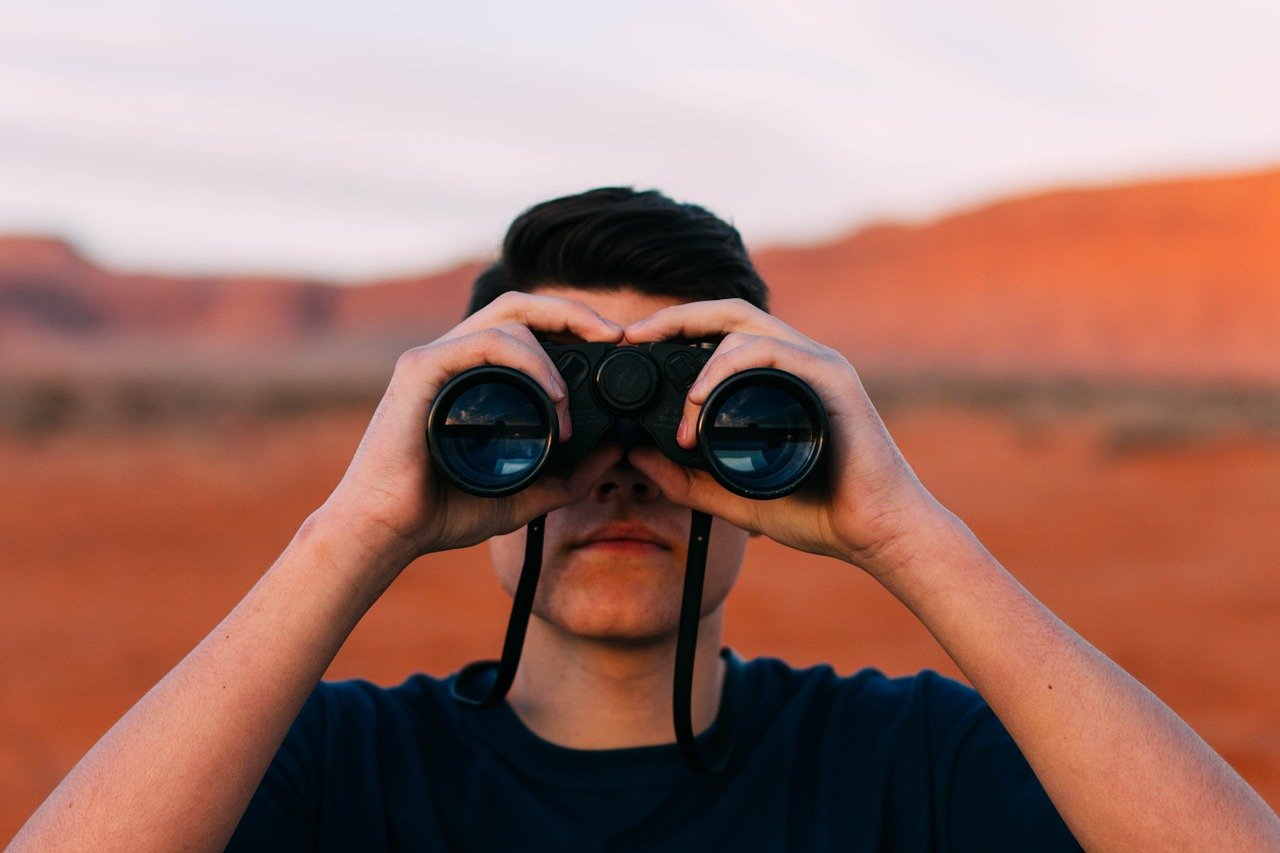These three verbs all mean to use your sense of vision, but there are differences in how they’re used that can be confusing even to advanced learners of English. In this post we’ll dig deeper into each of these verbs, talk about the generalizations, and examples that can seem like confusing exceptions.
The Generalizations
At the most basic level, see, look at, and watch differ in whether or not you’re purposefully using your vision, and for how long you’re doing it. You can think of the following as generalizations, rather than rules, because as you’ll see they’re not always helpful.
See: Unintentional, Short Time
If something enters your field of vision and you perceive it, you would use see. For example, if you’re standing at your window and a deer walks by, you could later say:
- I saw a deer in my back yard.
You weren’t expecting it, it just appeared, and you perceived it with your eyes. That’s see.
- I never see cars on the street at this time.
- Mary saw a woman walking four dogs.
- The dog saw the cat and won’t stop barking.
Look at: Intentional, Short Time
If you call out to your partner to bring his or her attention to the deer, you would say:
- Look at the deer in the back yard!
In this case, there’s intention involved. You’re asking your partner to intentionally see something, so you use look at. (And remember, you never look something, you always look at something.)
- Look at that building, it’s the Empire State Building.
- I looked at the clock and realized how late it was.
- Look at me when I’m speaking to you!
Watch: Intentional, Long Time
Now if you and your partner stand at the window for a while to observe the deer – what is it eating? is it a buck or a doe? are there others? – you would use watch.
- We watched the deer in the backyard for ten minutes before it went into the woods.
Watch always conveys a sense of purpose or intention, it’s an act of paying attention, and it usually lasts a while.
- I watched a really great show on TV last night.
- We went out on a boat to watch the whales.
- Before the store we watched the sky getting darker and darker.
But hang on, it’s not that simple.
Those basic generalizations will help you maybe 90% of the time. But remember that they’re not rules, just (mostly helpful) generalizations.
See a movie, see a friend
See is often also used in cases that are intentional, and that last a long time. This goes against the generalization above. For example:
- I saw a great show on TV last night.
- Kaylee and Mark have been seeing each other for three months. (=dating)
You’ll hear English speakers say “see a film/movie/TV show” or “watch a film/movie/TV show,” and they usually mean exactly the same thing. They’re not quite so interchangeable if you really want to stress the amount of time, in which case most English speakers would probably use watch and not see.
- Did you see Game of Thrones last night?
- Did you watch Game of Thrones last night?
- I watched it for thirty minutes but then fell asleep.
I saw it for thirty minutes but then fell asleep. (sounds odd, at least to my ears)
Watch and Look at: Waiting for something to change?
There’s another subtle difference between watch and look at. Watch is used if you’re focusing on something for a long time intentionally. It’s also used if there’s an expected possible change. For example:
- Look at the pot on the stove. Is it boiling yet?
(I just want you to tell me about what’s happening right now.) - Can you watch the pot on the stove and let me know when it starts boiling?
(I want you to observe the pot for a few minutes and tell me when it starts boiling.)
If you’re at an art museum, most people would usually look at the art. They may stand in front of a painting for a long time, but most speakers would still use look at. A museum guard, on the other hand, would probably watch the paintings, to see for example if anyone is touching them or doing anything they’re not supposed to do.
- The visitors looked at every painting in the gallery.
- The guards watched every painting in the gallery.
Can you see?
If you’re referring to the ability to use your sense of vision, you always use see, no matter what it is that you’re seeing, watching, or looking at.
- He’s looking at the menu but he can’t see a thing without his glasses.
- We watched a movie last night but I couldn’t see because there was a really tall guy in front of me.
- You can see the park from my apartment. Come look at it!
- Move! I’m trying to watch TV and I can’t see with you standing there!
- I see better with my left eye, so sometimes I close my right eye when I look at something.
- Look at this beautiful sculpture. Come over here so you can see it better.
Learn English with the Language Garage!
If you’re interested in ESL/EFL lessons, please check out our English courses. We have private lessons, lessons for you and a friend or colleague, or small groups. Or see our other posts on English grammar, vocabulary, and more.
Image by Free-Photos from Pixabay.






